MyPrivacyManager is a PUP (potentially unwanted program) from the family of browser hijackers. It replaces your Internet Explorer, Mozilla Firefox, Microsoft Edge and Google Chrome’s newtab, default search provider and home page and can reroute your web-browser to some annoying websites. Of course, it’s not a malicious software or virus in the “general meaning” of this word. It will not delete or damage your files, but it can alter some machine’s settings and install unwanted browser extensions. So, you’d better to remove MyPrivacyManager using the steps below and thus restore your preferred home page and search provider.
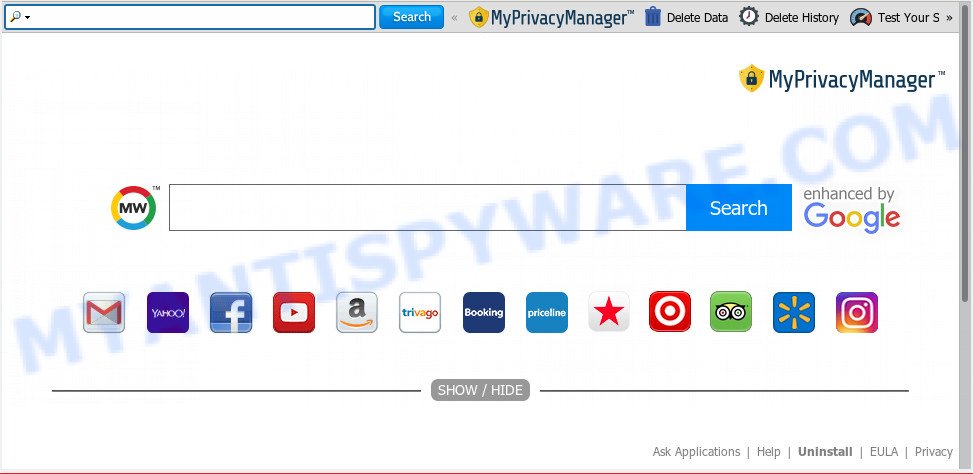
MyPrivacyManager
In addition, the MyPrivacyManager browser hijacker may also change the search provider selected in the web-browser. When you try to search on the affected web-browser, you’ll be presented with search results, consisting of advertisements and Google (or Yahoo, or Bing) search results for your query. Among these search results can occur links that lead to unwanted and ad websites.
Also, adware (sometimes called ‘ad-supported’ software) can be installed on the machine together with MyPrivacyManager hijacker infection. It will insert a lot of advertisements directly to the web sites that you view, creating a sense that advertisements has been added by the authors of the web-page. Moreover, legal advertisements may be replaced on fake advertisements which will offer to download and install various unnecessary and malicious programs. Moreover, the MyPrivacyManager hijacker has the ability to collect lots of marketing-type data about you that can be later used for marketing purposes.
Threat Summary
| Name | MyPrivacyManager |
| Type | browser hijacker, search provider hijacker, startpage hijacker, toolbar, unwanted new tab, redirect virus |
| Symptoms |
|
| Removal | MyPrivacyManager removal guide |
We strongly recommend you to complete the steps which follow below. We will show you how to delete browser hijacker and thereby remove MyPrivacyManager from your Internet Explorer, MS Edge, Chrome and Mozilla Firefox forever.
How to remove MyPrivacyManager (redirect virus removal guide)
In the few simple steps below we will have a look at the browser hijacker infection and how to delete MyPrivacyManager from Internet Explorer, Firefox, Edge and Google Chrome web browsers for Microsoft Windows OS, natively or by using a few free removal utilities. Some of the steps will require you to reboot your PC system or shut down this website. So, read this guide carefully, then bookmark or print it for later reference.
To remove MyPrivacyManager, use the steps below:
- Manual MyPrivacyManager removal
- How to remove MyPrivacyManager automatically
- Stop MyPrivacyManager redirect
- How did MyPrivacyManager browser hijacker get on your PC system
- To sum up
Manual MyPrivacyManager removal
Read this section to know how to manually remove the MyPrivacyManager hijacker. Even if the few simple steps does not work for you, there are several free malware removers below that can easily handle such hijackers.
Removing the MyPrivacyManager, check the list of installed software first
Some programs are free only because their installation package contains a hijacker such as the MyPrivacyManager. This unwanted applications generates profit for the authors when it is installed. Many hijackers can be removed by simply uninstalling them from the ‘Uninstall a Program’ that is located in MS Windows control panel.
Windows 8, 8.1, 10
First, click Windows button
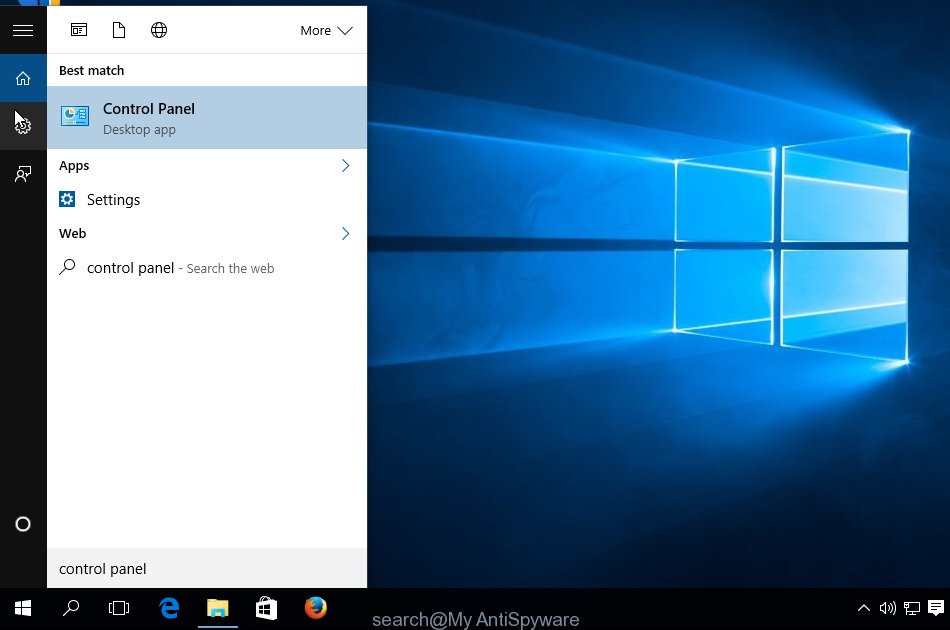
When the ‘Control Panel’ opens, click the ‘Uninstall a program’ link under Programs category as shown on the screen below.
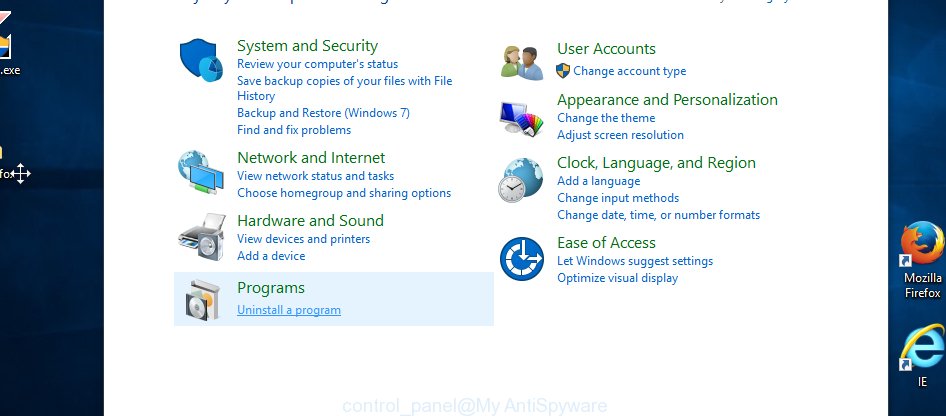
You will see the ‘Uninstall a program’ panel as displayed on the screen below.

Very carefully look around the entire list of software installed on your PC. Most probably, one of them is the browser hijacker that redirects your browser to undesired MyPrivacyManager website. If you’ve many programs installed, you can help simplify the search of harmful apps by sort the list by date of installation. Once you’ve found a suspicious, unwanted or unused application, right click to it, after that click ‘Uninstall’.
Windows XP, Vista, 7
First, press ‘Start’ button and select ‘Control Panel’ at right panel as shown below.

When the Windows ‘Control Panel’ opens, you need to click ‘Uninstall a program’ under ‘Programs’ as on the image below.
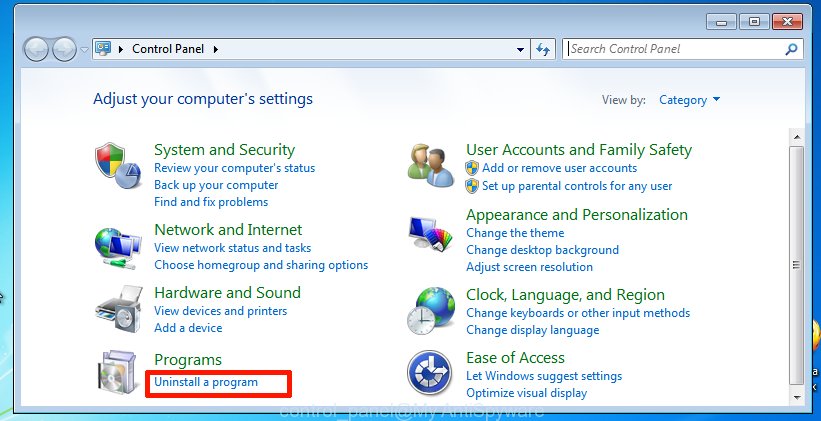
You will see a list of applications installed on your machine. We recommend to sort the list by date of installation to quickly find the programs that were installed last. Most likely, it is the hijacker which designed to reroute your web browser to the MyPrivacyManager web page. If you’re in doubt, you can always check the program by doing a search for her name in Google, Yahoo or Bing. When the program which you need to delete is found, simply click on its name, and then press ‘Uninstall’ as displayed in the following example.
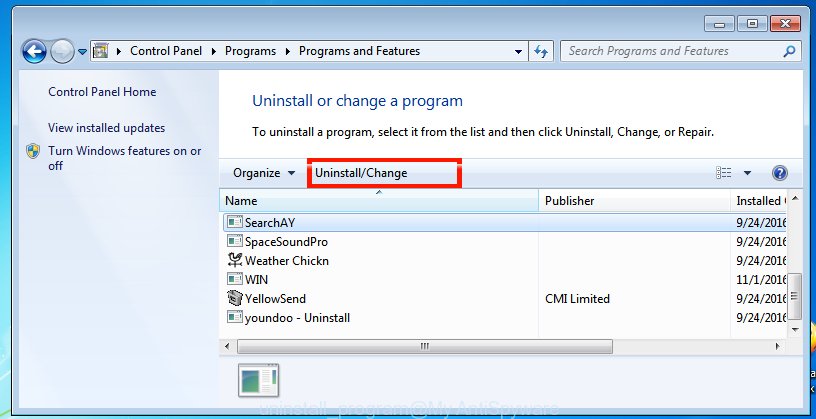
Remove MyPrivacyManager home page from Mozilla Firefox
Resetting Mozilla Firefox browser will reset all the settings to their original state and will remove MyPrivacyManager, malicious add-ons and extensions. When using the reset feature, your personal information like passwords, bookmarks, browsing history and web form auto-fill data will be saved.
First, run the Firefox. Next, press the button in the form of three horizontal stripes (![]() ). It will show the drop-down menu. Next, click the Help button (
). It will show the drop-down menu. Next, click the Help button (![]() ).
).

In the Help menu click the “Troubleshooting Information”. In the upper-right corner of the “Troubleshooting Information” page click on “Refresh Firefox” button as shown on the image below.

Confirm your action, click the “Refresh Firefox”.
Remove MyPrivacyManager start page from Internet Explorer
First, launch the Microsoft Internet Explorer. Next, click the button in the form of gear (![]() ). It will display the Tools drop-down menu, click the “Internet Options” as on the image below.
). It will display the Tools drop-down menu, click the “Internet Options” as on the image below.

In the “Internet Options” window click on the Advanced tab, then click the Reset button. The Microsoft Internet Explorer will open the “Reset Internet Explorer settings” window like below. Select the “Delete personal settings” check box, then click “Reset” button.

You will now need to reboot your computer for the changes to take effect.
Remove MyPrivacyManager from Google Chrome
Reset Google Chrome settings will help you to completely reset your web-browser. The result of activating this function will bring Chrome settings back to its original state. This can remove MyPrivacyManager and disable harmful add-ons. However, your saved passwords and bookmarks will not be changed, deleted or cleared.
First launch the Google Chrome. Next, press the button in the form of three horizontal dots (![]() ).
).
It will show the Chrome menu. Choose More Tools, then press Extensions. Carefully browse through the list of installed addons. If the list has the extension signed with “Installed by enterprise policy” or “Installed by your administrator”, then complete the following guidance: Remove Google Chrome extensions installed by enterprise policy.
Open the Chrome menu once again. Further, click the option called “Settings”.
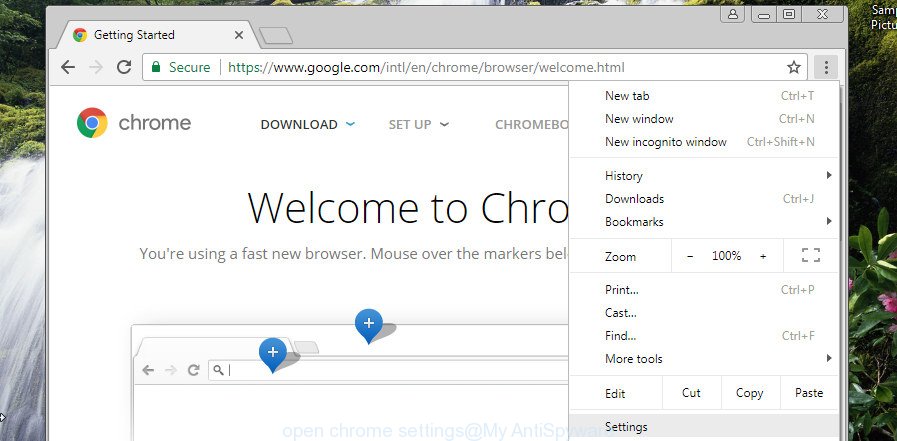
The web browser will show the settings screen. Another way to show the Google Chrome’s settings – type chrome://settings in the web-browser adress bar and press Enter
Scroll down to the bottom of the page and click the “Advanced” link. Now scroll down until the “Reset” section is visible, as shown on the image below and press the “Reset settings to their original defaults” button.
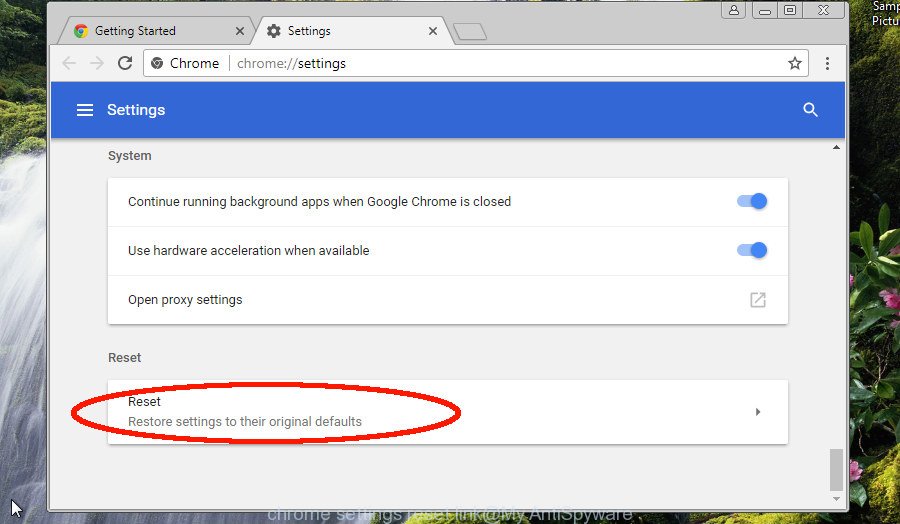
The Google Chrome will open the confirmation prompt like below.

You need to confirm your action, press the “Reset” button. The web-browser will start the procedure of cleaning. Once it’s complete, the browser’s settings including default search engine, newtab and homepage back to the values which have been when the Chrome was first installed on your PC.
How to remove MyPrivacyManager automatically
Run malware removal tools to remove MyPrivacyManager automatically. The freeware tools specially developed for browser hijacker infection, adware software and other potentially unwanted software removal. These utilities can delete most of browser hijacker infection from Edge, Chrome, Mozilla Firefox and Internet Explorer. Moreover, it can remove all components of MyPrivacyManager from Windows registry and system drives.
How to get rid of MyPrivacyManager with Zemana AntiMalware
You can download and use the Zemana AntiMalware for free. This anti-malware tool will scan all the registry items and files in your computer along with the system settings and web-browser plugins. If it finds any malicious software, adware or malicious plugin that is designed to redirect your web-browser to the MyPrivacyManager web site then the Zemana Anti-Malware (ZAM) will get rid of them from your PC system completely.
Now you can set up and run Zemana Anti Malware to remove MyPrivacyManager from your web browser by following the steps below:
Visit the page linked below to download Zemana installer called Zemana.AntiMalware.Setup on your computer. Save it on your Desktop.
165041 downloads
Author: Zemana Ltd
Category: Security tools
Update: July 16, 2019
Run the installer after it has been downloaded successfully and then follow the prompts to set up this utility on your computer.
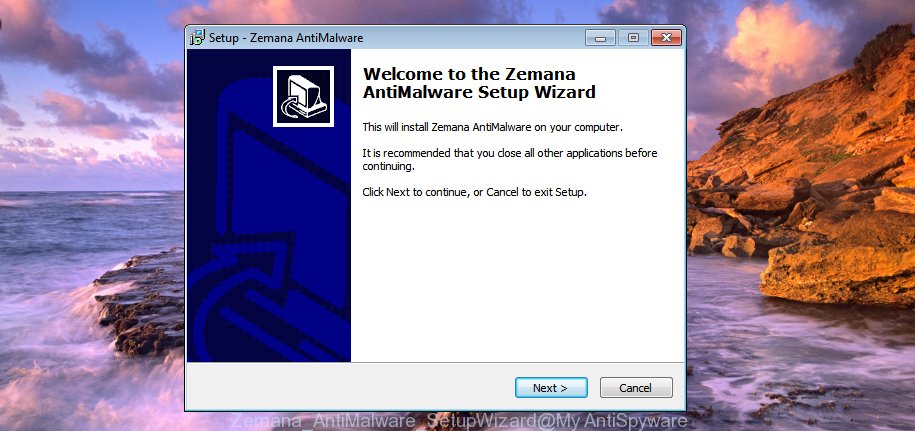
During installation you can change certain settings, but we recommend you don’t make any changes to default settings.
When installation is complete, this malicious software removal utility will automatically run and update itself. You will see its main window as displayed on the screen below.
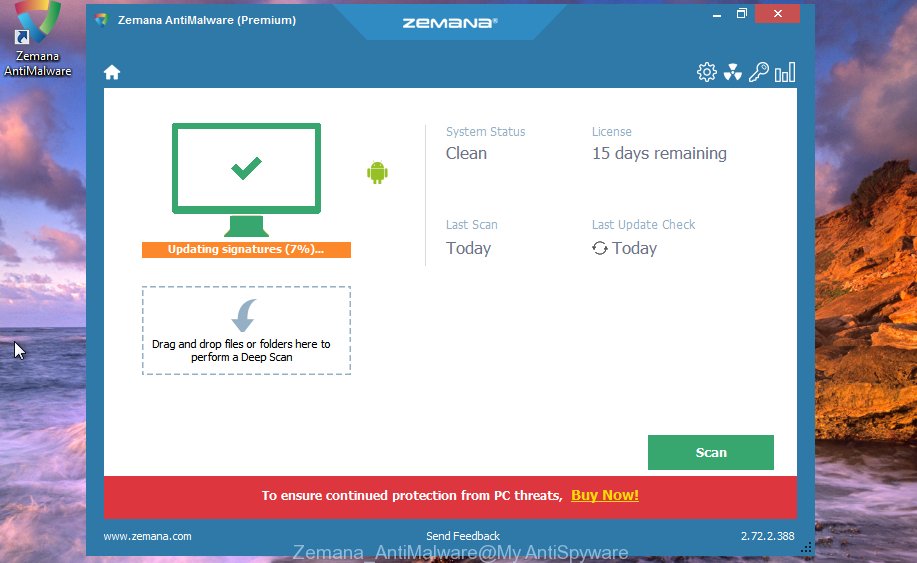
Now click the “Scan” button . Zemana Free program will scan through the whole PC system for the hijacker infection which changes web-browser settings to replace your new tab, default search provider and homepage with MyPrivacyManager website. When a malicious software, adware or PUPs are detected, the number of the security threats will change accordingly. Wait until the the checking is finished.

When Zemana AntiMalware (ZAM) has completed scanning your personal computer, Zemana AntiMalware will prepare a list of unwanted applications and browser hijacker. You may remove items (move to Quarantine) by simply click “Next” button.
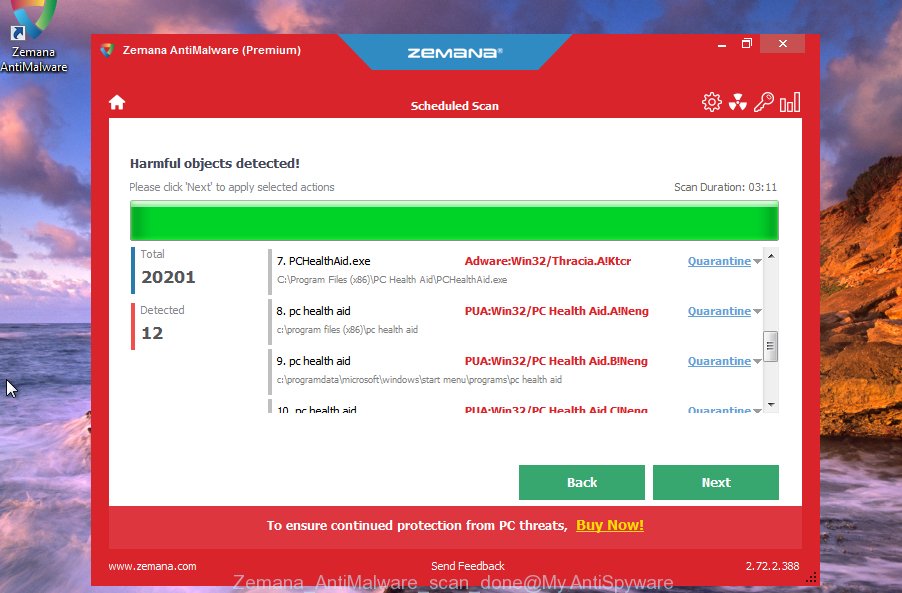
The Zemana will begin to remove browser hijacker responsible for redirections to MyPrivacyManager. When the cleaning process is done, you may be prompted to restart your computer to make the change take effect.
Scan and free your machine of browser hijacker with Hitman Pro
HitmanPro is a free removal utility. It removes potentially unwanted programs, adware, hijackers and unwanted browser extensions. It’ll identify and delete hijacker infection responsible for redirecting your web browser to MyPrivacyManager web-site. Hitman Pro uses very small computer resources and is a portable program. Moreover, HitmanPro does add another layer of malware protection.
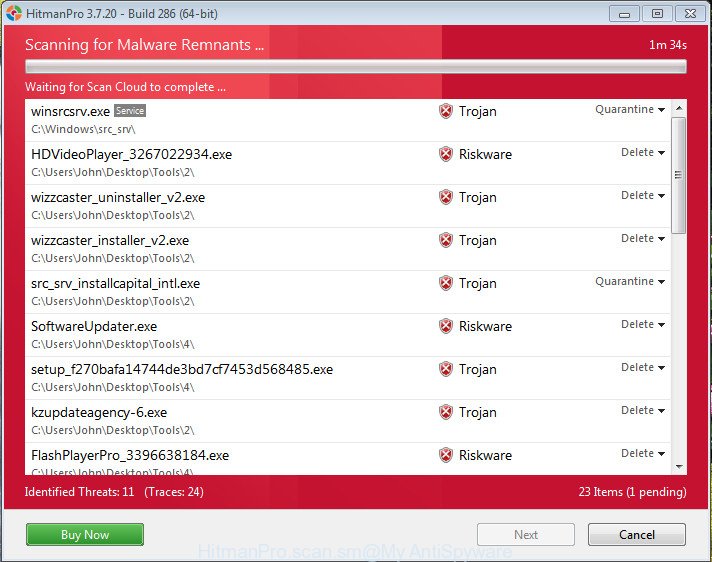
- Installing the Hitman Pro is simple. First you will need to download Hitman Pro on your personal computer by clicking on the link below.
- After the downloading process is complete, double click the HitmanPro icon. Once this tool is started, click “Next” button . Hitman Pro utility will begin scanning the whole system to find out hijacker infection that causes web-browsers to open unwanted MyPrivacyManager web page. Depending on your machine, the scan may take anywhere from a few minutes to close to an hour. When a malicious software, adware or PUPs are found, the number of the security threats will change accordingly. Wait until the the checking is complete.
- After finished, HitmanPro will display a list of detected threats. Review the report and then click “Next” button. Now click the “Activate free license” button to begin the free 30 days trial to delete all malware found.
Automatically get rid of MyPrivacyManager home page with MalwareBytes Free
You can delete MyPrivacyManager homepage automatically through the use of MalwareBytes. We suggest this free malware removal utility because it may easily remove hijacker infection, adware software, PUPs and toolbars with all their components such as files, folders and registry entries.
Installing the MalwareBytes Anti Malware is simple. First you’ll need to download MalwareBytes AntiMalware (MBAM) on your PC by clicking on the link below.
327268 downloads
Author: Malwarebytes
Category: Security tools
Update: April 15, 2020
Once the downloading process is done, close all windows on your computer. Further, start the file named mb3-setup. If the “User Account Control” prompt pops up as shown below, press the “Yes” button.

It will display the “Setup wizard” that will help you setup MalwareBytes on the system. Follow the prompts and do not make any changes to default settings.
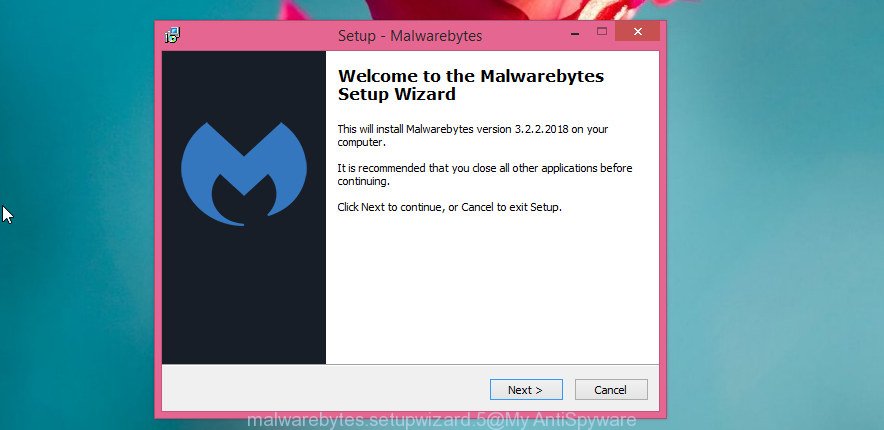
Once installation is complete successfully, press Finish button. Then MalwareBytes AntiMalware will automatically run and you can see its main window as shown on the image below.
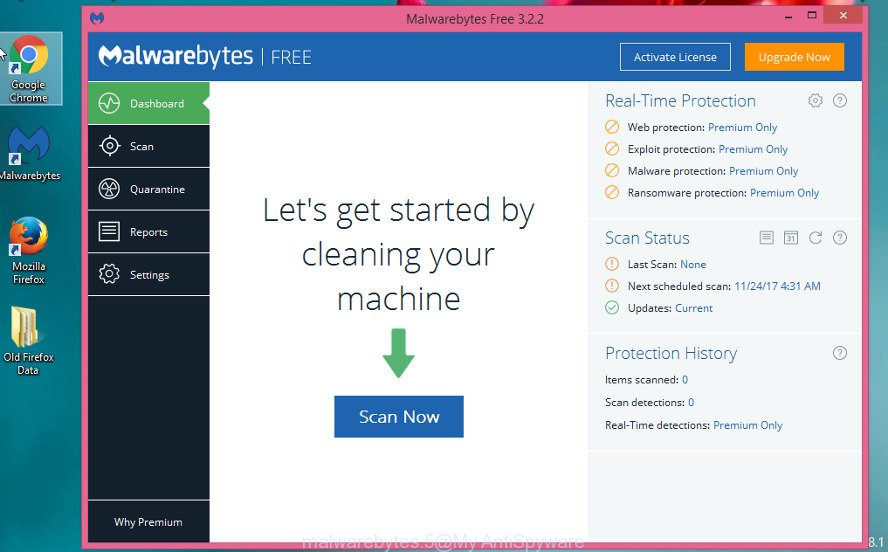
Next, click the “Scan Now” button to perform a system scan with this utility for the browser hijacker responsible for changing your web-browser settings to MyPrivacyManager. This procedure can take some time, so please be patient. During the scan MalwareBytes AntiMalware (MBAM) will look for threats present on your personal computer.
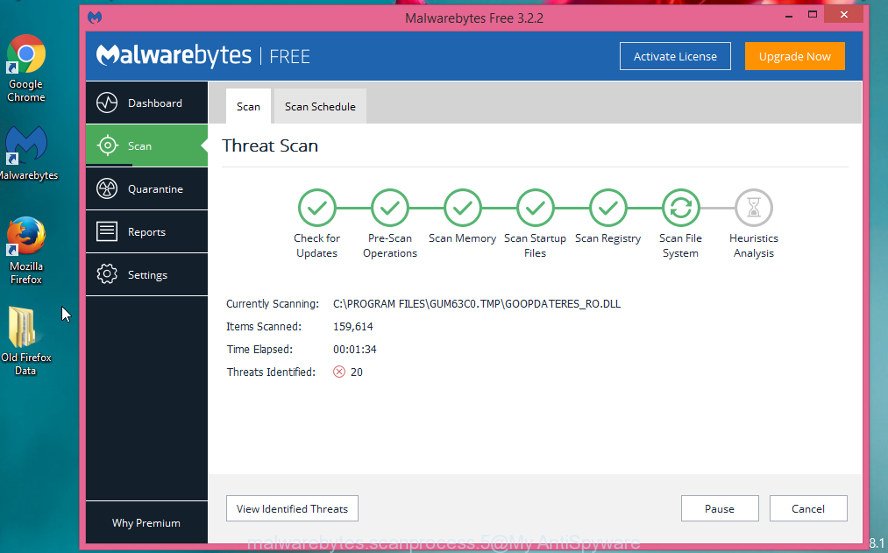
After MalwareBytes has completed scanning your PC system, MalwareBytes Anti-Malware will show a scan report. Next, you need to click “Quarantine Selected” button.
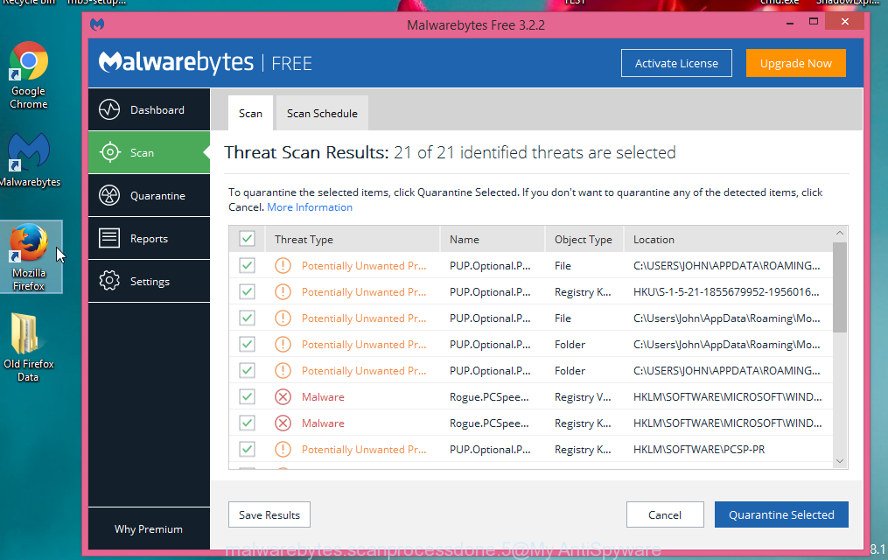
The MalwareBytes Anti-Malware (MBAM) will begin to get rid of browser hijacker that cause MyPrivacyManager webpage to appear. After disinfection is finished, you can be prompted to reboot your computer. We recommend you look at the following video, which completely explains the procedure of using the MalwareBytes Free to remove browser hijackers, adware and other malware.
Stop MyPrivacyManager redirect
If you browse the Internet, you cannot avoid malvertising. But you can protect your internet browser against it. Download and run an ad blocker program. AdGuard is an ad-blocker which can filter out a lot of of the malicious advertising, blocking dynamic scripts from loading harmful content.
Download AdGuard by clicking on the link below. Save it on your Windows desktop.
26901 downloads
Version: 6.4
Author: © Adguard
Category: Security tools
Update: November 15, 2018
When downloading is finished, double-click the downloaded file to start it. The “Setup Wizard” window will show up on the computer screen as displayed on the image below.
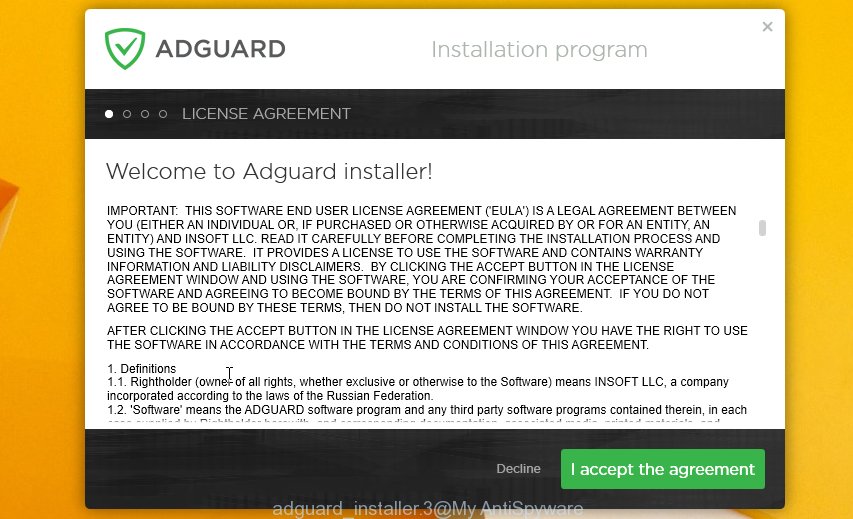
Follow the prompts. AdGuard will then be installed and an icon will be placed on your desktop. A window will show up asking you to confirm that you want to see a quick instructions as displayed in the figure below.

Press “Skip” button to close the window and use the default settings, or click “Get Started” to see an quick tutorial that will assist you get to know AdGuard better.
Each time, when you start your computer, AdGuard will start automatically and stop unwanted ads, block MyPrivacyManager, as well as other harmful or misleading webpages. For an overview of all the features of the application, or to change its settings you can simply double-click on the AdGuard icon, that can be found on your desktop.
How did MyPrivacyManager browser hijacker get on your PC system
Probably MyPrivacyManager browser hijacker get installed onto your PC when you have installed some freeware such as E-Mail checker, PDF creator, video codec, etc. Because, most commonly, a hijacker infection can be bundled within the installers from Softonic, Cnet, Soft32, Brothersoft or other similar websites that hosts free applications. So, you should start any files downloaded from the Internet with great caution! Always carefully read the ‘User agreement’, ‘Software license’ and ‘Terms of use’. In the procedure of installing a new application, you need to choose a ‘Manual’, ‘Advanced’ or ‘Custom’ installation option to control what components and third-party applications to be installed. Nevertheless, even removing the application, which installs this MyPrivacyManager browser hijacker, you do not delete the hijacker itself. Your web-browser settings will not be restored. Therefore, you must follow the step-by-step guide above to return your newtab, default search engine and startpage.
To sum up
Now your personal computer should be clean of the hijacker infection that responsible for web-browser redirect to the annoying MyPrivacyManager web site. We suggest that you keep AdGuard (to help you stop unwanted pop up advertisements and undesired harmful web pages) and Zemana Free (to periodically scan your machine for new malware, browser hijackers and adware). Make sure that you have all the Critical Updates recommended for Windows OS. Without regular updates you WILL NOT be protected when new browser hijackers, malicious programs and adware software are released.
If you are still having problems while trying to get rid of MyPrivacyManager home page from your web-browser, then ask for help here.




















